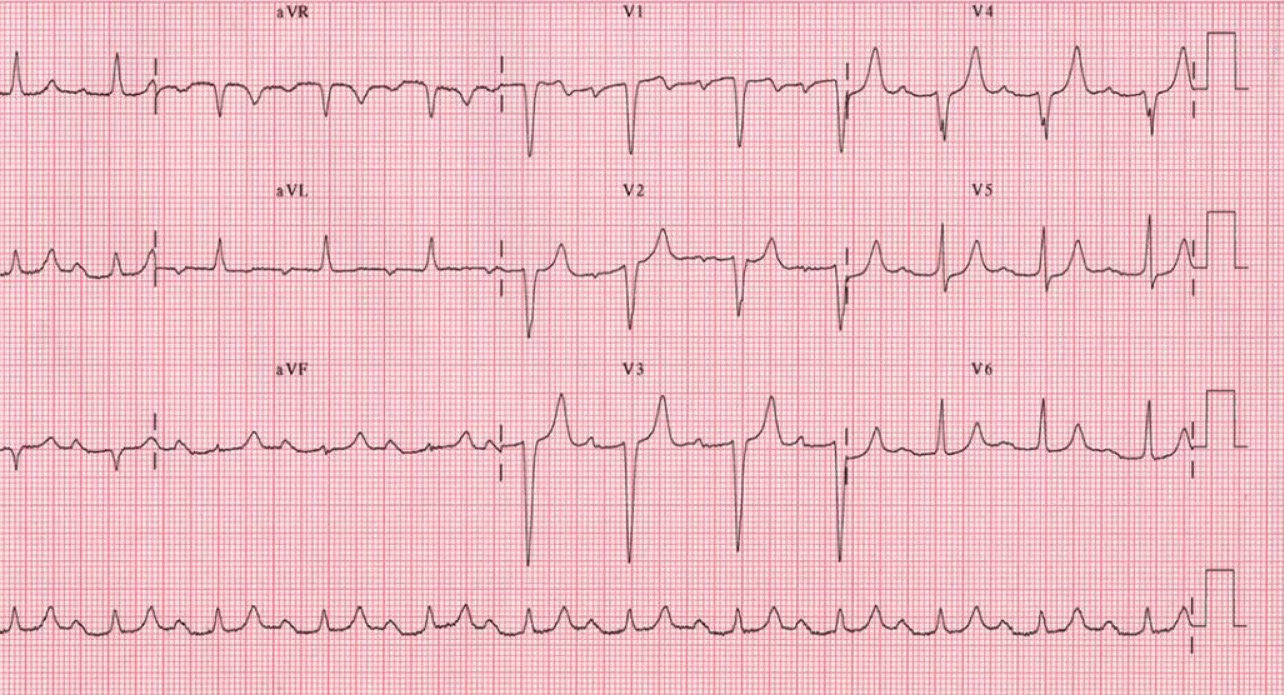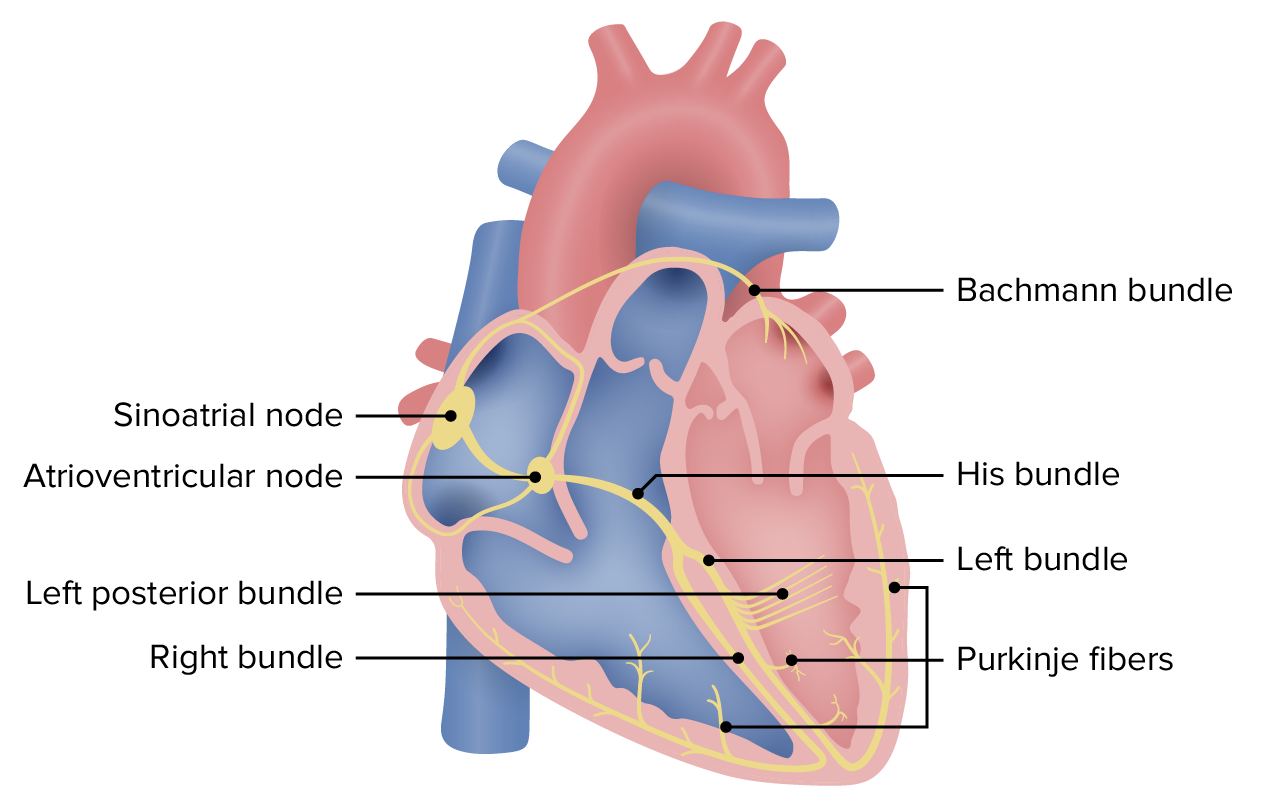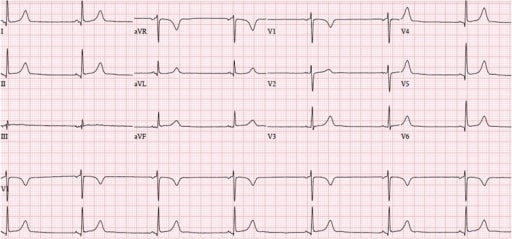Playlist
Show Playlist
Hide Playlist
Arrhythmia: Definition, General Categories and Clinical Manifestations
-
Slides Arrhythmia.pdf
-
Reference List Pathology.pdf
-
Download Lecture Overview
00:01 So arrhythmia can also be equivalent to dysrhythmia, whichever one you like. 00:05 I tend to say arrhythmia, but whatever. 00:08 Irregular heartbeat is due to a disorder of either impulse production, impulse conduction, or in some instances, can be both. 00:18 So general categories of arrhythmia, it can be sustained just ongoing. 00:23 So you can have patients who are in chronic atrial fibrillation. 00:29 It can be intermittent. 00:31 So you can have paroxysmal atrial fibrillation comes and it goes, depending on circumstances within the myocardium. 00:40 Okay. 00:41 It can be a supraventricular arrhythmia. 00:44 So things that are originating from the atrium shown in green. 00:48 It can be a ventricular arrhythmia originating from ventricular myocardium. 00:56 Among the other general categories is can it be fast or slow? So the normal heart rate is somewhere between 16 and 100 beats per minute, and it's a regular rhythm. 01:10 Now, you can have bradycardia, a slower heart rate, less than 60 beats per minute. 01:14 Bump, bump, bump. 01:19 But it's regular. 01:24 You can have tachycardia, a faster heart rate, greater than 100 beats per minute. 01:29 Again, bump, bump, bump, bump, bump, bump, bump, bump, bump. 01:33 a regular rhythm, but it's just faster. 01:36 And we have used those terms, normal bradycardia, tachycardia. 01:46 You can have an irregular rhythm with a normal ventricular contraction. 01:50 In this case, this is due to atrial fibrillation, So the atria are quivering for whatever reason, and it's usually because the atria has been dilated. 01:58 And so the conduction fibers, those internodal pathways are stretched, and we get irregular conduction through them down to the atriventricular node. 02:06 So the atria are quivering, they're not squeezing. 02:08 They don't make that nice 10 to 15% ejection into the ventricles. 02:13 The signal going through the AV note intermittently goes through. 02:17 So sometimes it goes through. 02:19 Sometimes we're in a relative refractory period and it doesn't go through. 02:22 So the rhythm of this can be anything from bradycardic normal rhythm, normal kind of intervals between 60 and 100 beats per minute or can be tachycardic, but it will be irregularly, irregular. 02:37 So regular beat, bump, bump, bump, bump. 02:40 Atrial fibrillation, Bump, buh-bump, bump, bump, buh-buh-buh-buh-bump, bump, bump, bump, So it's irregularly irregular. 02:56 You can also have ventricular fibrillation. 02:58 This is a lethal arrhythmia. 03:00 Basically, the ventricle is now quivering, kind of like the atrium did before, for a variety of reasons. 03:05 The ventricle, when it quivers, doesn't squeeze blood out at all. 03:09 And now we're not going to be able to perfuse the brain. 03:11 And within 2 to 3 minutes, the patient will unfortunately die. 03:16 And then there is no contraction asystole, okay. 03:20 And basically it just means no systole, no contraction Signs and symptoms of arrhythmia. 03:29 So patients may be totally asymptomatic. 03:32 Clearly, if they're in ventricular fibrillation, they're going to be symptomatic. 03:36 But we have patients who are bradycardic, don't know it. 03:38 Patients who are tachycardic don't necessarily feel that. 03:41 Patients who are in chronic atrial fibrillation may be totally unaware of that. 03:46 So it depends on the sensitivity of the patient and other circumstances, whether they are aware that they have it. 03:52 It can be symptomatic. 03:54 Patients perceive that there's irregular heartbeat and if they actually are measuring their heart rate, they may sense that it's irregular or that it's going really, really fast. 04:04 There may be a sensation in the chest of their heart leaping out of their chest. 04:09 Those are called palpitations. 04:12 depending on the degree of the dysfunction in terms of the cardiac output, if you have ventricular fibrillation, you may not be getting adequate flow down the coronary arteries, clearly, which will lead to chest pain or pressure. 04:29 You're having an anginal symptom as a result of arrhythmias. 04:32 And in some cases of atrial fibrillation with a rapid ventricular response where you have AFib that's then getting conducted through the AV node very quickly, you can have heart rates of 150 to 180. 04:45 Patients who have coronary atherosclerotic disease, that may actually get them into a situation where there is a greater demand than there is a supply so you can have chest pain or pressure. 04:56 They may be short of breath and again, this is related to ischemic heart disease, and then a subsequent left ventricular dysfunction. 05:05 They may be light headed so if they're extremely bradycardic say, for example in the 20s to 30s they may not be providing adequate perfusion, especially when they're standing upright, to their brain. 05:17 They may feel like they're going to pass out or they may formally lose consciousness, may have syncope. 05:23 Similarly, if you have atrial fibrillation with a very high rapid ventricular response rate, you may be lightheaded, you're just not, you're beating so quickly with not much ejection fraction that you're not perfusing your brain. 05:37 So that can lead to loss of consciousness. 05:40 And clearly in the symptomatic category of sudden cardiac death where the QRS complex, the normal electrical activity, heart ceases altogether. 05:51 Okay, yeah, I'd say that's symptomatic.
About the Lecture
The lecture Arrhythmia: Definition, General Categories and Clinical Manifestations by Richard Mitchell, MD, PhD is from the course Arrhythmia.
Included Quiz Questions
Which of the following heart rates would be considered abnormal?
- 55
- 65
- 95
- 85
- 75
Which of the following arrhythmias is called "irregularly irregular"?
- Atrial fibrillation
- Ventricular fibrillation
- Ventricular tachycardia
- Torsades de pointes
- Atrial flutter
Customer reviews
5,0 of 5 stars
| 5 Stars |
|
5 |
| 4 Stars |
|
0 |
| 3 Stars |
|
0 |
| 2 Stars |
|
0 |
| 1 Star |
|
0 |








